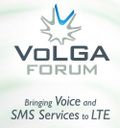Next week Nokia World 2009 will be held in Stuttgart and while I am waiting for the press to give me the details of the event while I am roaming in the Scottish highlands I've been thinking a bit about what Nokia's recent announcements around the new Nokia N900 could mean for the future of mobile devices.
To me, the current smartphone market by and large looks as follows:
S60
For the moment I am still stuck with my S60 driven Nokia N95. The OS so far is closed source but anyone can develop programs for it and does not depend on Nokia to allow or certify anything if the developer thinks the user can handle a couple of warnings during program installation. To get rid of them, programs can be certified by Nokia / S60, which takes a bit of time, but unless the program does something really malicious, Nokia / S60 have no preconceptions on what should be allowed or not. While this sounds all great and a lot of applications are available, S60 has lost a lot of mindshare in the past 18 months. Many developers are now preferring the iPhone OS or Android when it comes to new and cool stuff. On top, Nokia has decided to strip out a couple of cool features in its latest phones such as VoIP, a killer argument for me against buying another S60 phone in the future.
The Jail
And then, of course, there is the iPhone. Great marketing, great user interface, very easy to use. Unfortunately, it has no multitasking and Apple is pretty opinionated on what should run on the iPhone and what not. The latest Apple / Google quarrel is a good example. No, thank you, not my piece of cake, either. When I buy a device, I should be the one to decide what I want to run on it and what not.
The Cloud
Next, there's Android. Based on Linux and undoubtedly very innovative, it is most useful if the user shares his private data with Google servers in the cloud. From a usage perspective, it's great, as your e-mail, address book, documents, etc. are available and synchronized between all devices of a user. I like that a lot but I don't like sharing my private data with Google or with anyone else for that matter. Private synchronization or connected home services are the way forward to me. For details, see here.
The Rest: And then there are OS'es like Windows Mobile and the the Palm Pre's WebOS which either fall into one of the categories above or in between.
The N900 – To The Rescue?
So what I want from a mobile device is quite simply described:
- An OS for which new and innovative programs are developed for
- Multitasking
- My private data should be treated privately
- I decide which programs I want to use on my device and no one else.
Or in short: The same experience as I have on my PC and my netbook: I decide!
With Nokia announcing the Linux / Meamo based N900 smartphone I am getting my hopes up again a bit. Maemo has already been around for a number of years now on Nokia's Internet tablets so I have a fair idea of what it is and what it is not. While I've so far not been very impressed by it due to lacking 2G / 3G support, wrong form factor and slow speed, Nokia seems to have an answer to all of that with the N900. 600 MHz processor speed should hopefully take care of speed issues, 2G/3G network support has been added and the physical dimensions of the device are in the same ballpark as my current N95. Also, Nokia says that it will be VoIP capable.
On top, Maemo, at least up until now, has been a very open platform from various angles: First, it's based on Linux so it's very well known in the developer community. Second, unlike with Android, where applications developers have to work with a Java framework for their applications and have no direct access to the OS, Maemo works just like a PC based Linux distribution: (Almost) everything is fully open to developers, existing programs can easily be ported to Maemo and there is no lengthy certification process. In other words, while Android is based on Linux but doesn't give access to it to applications, Maemo fully does, unless, Nokia decides to remove that openness in the new version of Maemo. Let's hope not.
So if Nokia plays it right, they will make developers happy, they will make users like me happy and they've sold their first smartphone in two years to me!
Diversity Rules
But don't get me wrong here, I don't argue for a full and open Linux phone to be the one and only answer. I think there's also a place for devices that do fewer things, that are not as configurable and expandable, that are more tightly controlled. The reasons for that are plenty: Ease of use, better support from manufacturers or network operators for users, etc. etc. While many users might want that on their PC world and thus might prefer it in the mobile world too, there are many, like me, who thrive on openness!
